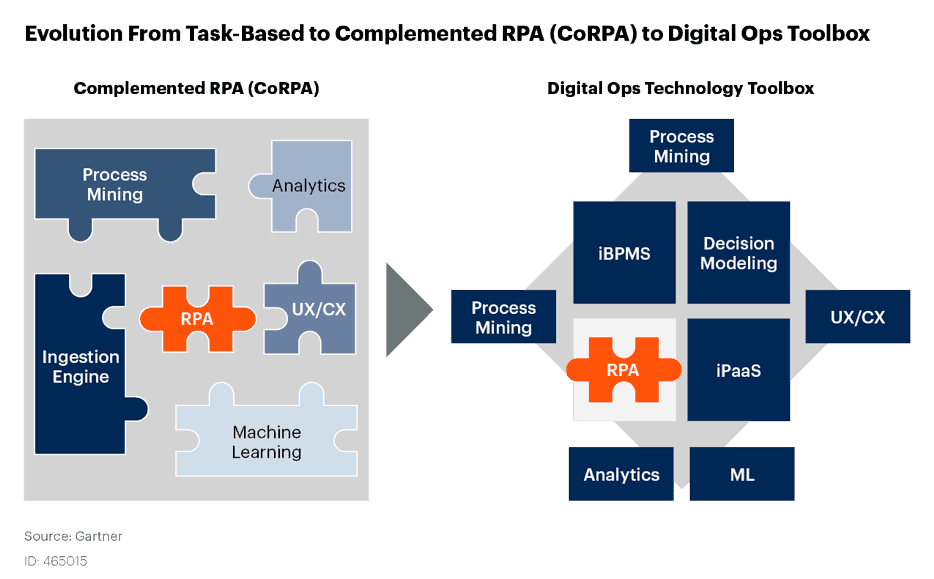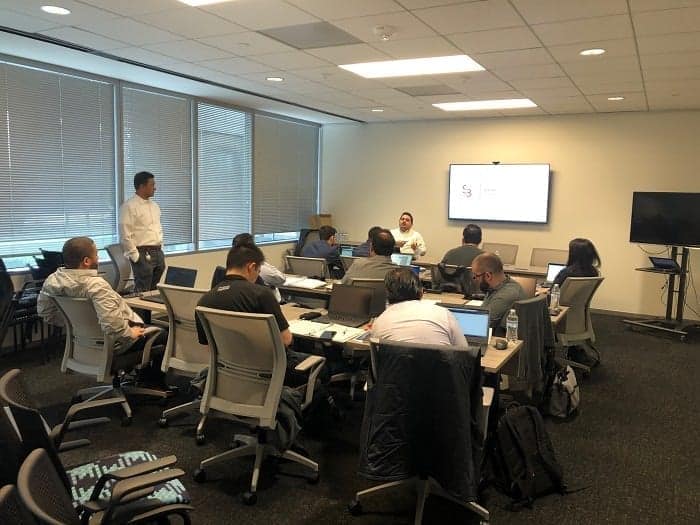RPA in 2020: Findings from Gartner & the Introduction to Hyperautomation
In this article, we’ll explore the findings of the 2020 Gartner report on RPA and show you what the future of automation will look like.
Robotic Process Automation (RPA) has been coming to fruition in organizations of every industry for the past few years. It’s something that took time to become aware of and enlightened on, but now that RPA is being implemented in businesses today, it’s time to look at the what’s next.
Recently, Gartner released their 2020 predictions for RPA which you can grab here. The report details how RPA (something that seems to be the most innovative tool for organizations right now) is evolving even more to meet complex business needs. How can automation be advanced further, you ask? Put the word “hyper” in front of it! That’s right, in 2020 we are looking at hyperautomation as the latest move in advancing RPA. According to Gartner, hyperautomation is “an approach in which organizations rapidly identify and automate as many business processes as possible”. This means using multiple technologies such as machine learning, automation tools, and packaged software in tandem.
Here are some predictions from Gartner:
By 2022, 80% of RPA-centric automation implementations will derive their value from complementary technologies
By 2024, organizations will lower operational costs by 30% by combining hyperautomation technologies with redesigned operational processes
By 2023, there will be a 30% increase in the use of RPA for front-office functions (sales and customer experience)
In 2018, the RPA software market grew over 60% and has been continuously growing ever since. Along with this growth is also refinement of technology and its ability to evolve a workplace. Now, big names like Microsoft are getting into the game along with a plethora of other vendors which means that RPA will need to take on more than simple task management
That’s where hyperautomation comes in. By combining RPA with other technologies and software, you can focus on a “wider spectrum of business functions and knowledge work” beyond simple task-based projects that might not work in the wheel of the organization as a whole. In order to determine specifically which technologies to combine with the core RPA, many vendors are defining five other offering areas such as process mining, ingestion engine, analytics, user experience, and machine learning. Gartner is referring to this as “Complemented RPA (CoRPA).

However, the pieces of CoRPA can be difficult or nearly impossible to put together without knowing the bigger picture of the organization and how a technological transformation can fit within it.
“Stop looking for one-off processes in which RPA could be implemented and start with the business outcome you would like to achieve.”
Of course, this bigger picture means looking at every aspect of the business. Today, RPA is generally used as a back-office solution, but companies are starting to look at how it can be used to drive more revenue and enhance customer experience by also being a part of front-office activities. This will add a new level of distinction and competition among vendors in the marketplace. Learning how RPA can elevate the front of office is just another way automation is evolving in the industry.

Looking for more on Automation?
Explore more insights and expertise at smartbridge.com/automation
Keep Reading: The Advantages of Automation in Business
There’s more to explore at Smartbridge.com!
Sign up to be notified when we publish articles, news, videos and more!
Other ways to
follow us:


